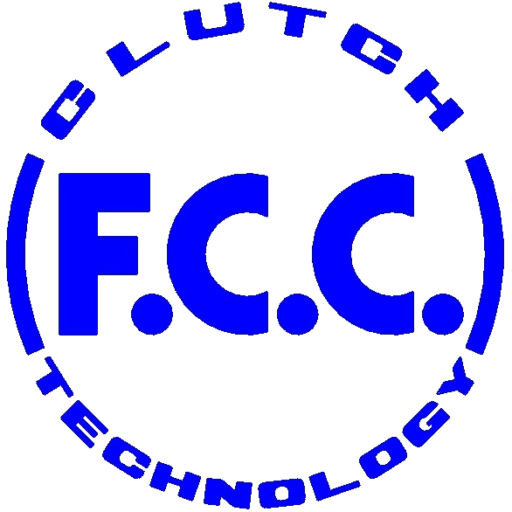Nanotechnology is transforming the landscape of materials science, bringing forth innovations to conventional technologies that were once the realm of science fiction. Nanotechnology in materials science involves the manipulation of matter on an atomic, molecular, and supramolecular scale. Essentially, it’s the science of the extremely small, dealing with structures sized between 1 and 100 nanometers. To put it in perspective, a nanometer is one-billionth of a meter, which is about 100,000 times smaller than the width of a human hair.
This FCC-NA blog delves into the fascinating world of nanotechnology, exploring its concepts, applications, and prospects for the industrial revolution. We stand behind innovative, energy-efficient technology as we strive to bring advanced clutch products to a changing world, even on a nano-scale.
Learn More About How FCC-NA Is Leading Clutch Manufacturing Today!
Historical Overview
The conceptual foundation of nanotechnology was laid in 1959 by physicist Richard Feynman in his lecture “There’s Plenty of Room at the Bottom.” The term “nanotechnology” was later coined by Norio Taniguchi in 1974. The field gained momentum in the 1980s with the development of tools such as the scanning tunneling microscope (STM) and the atomic force microscope (AFM), enabling scientists to observe and manipulate nanotechnology in materials science directly.
Importance in Modern Science
Nanotechnology’s ability to alter material properties at the nanoscale has vast implications across various fields. From medicine to electronics, energy efficiency to environmental science, nanotechnology promises unprecedented advancements, driving modern science toward new horizons.
Fundamentals of Nanomaterials
Let’s explore the defining properties, types, and unique advantages nanotechnology in materials science offers across a wide range of applications.
What are Nanomaterials?
Nanomaterials are materials with structural components smaller than 100 nanometers. They can exist in various forms, including nanoparticles, nanotubes, nanofilms, and nanocomposites. Their diminutive size grants them unique physical properties and characteristics that distinguish them from their bulk material counterparts.
Properties and Characteristics
Nanomaterials possess a remarkably high surface area-to-volume ratio, enhancing their surface coatings, reactivity, and catalytic efficiency, which is crucial for applications in catalysis, environmental cleanup, and energy production. They also exhibit superior mechanical properties, such as increased strength and resilience, despite their small size, making them ideal for lightweight and durable components in aerospace, automotive, and biomedical fields.
Additionally, nanomaterials display unique optical and electrical properties due to quantum effects at the nanoscale, influencing their transparency, color, and conductivity and enabling advancements in sensors, displays, and electronics.
Types of Nanomaterials
The different types of nanotechnology in materials science and engineering are as follows:
- Nanoparticles: Ultra-fine particles with dimensions in the nanometer range.
- Nanotubes: Cylindrical nanostructures, such as carbon nanotubes, are known for their strength and electrical properties.
- Nanofilms: Thin films used in surface coatings and electronic applications.
- Nanocomposites: Materials that combine nanoparticles with bulk matrices to enhance performance characteristics.
Nanotechnology in Material Engineering
Nanotechnology is reshaping material engineering by enabling the creation of advanced materials that exhibit unprecedented properties and functionalities across various industries.
Applications in Structural Materials
Nanoscale technologies enhance structural materials by improving their mechanical properties. For instance, nanocomposites integrate nanoscale reinforcements into matrices, significantly boosting their strength and durability. These materials find extensive use in aerospace and automotive applications, where lightweight components with exceptional strength-to-weight ratios are essential for improving fuel efficiency and performance.
Role in Electronic Materials
Nanotechnology is driving innovations in device miniaturization and performance. Nanoscale transistors, quantum dots, and nanowires are pivotal in creating faster, smaller, and more efficient electronic devices. These advancements not only enable the development of high-density memory storage and ultra-sensitive sensors but also contribute to the evolution of flexible electronics and wearable technologies.
Advancements in Biomaterials
In biomedicine, nanomaterials are tailored to enhance biocompatibility, allowing for the creation of implants that integrate seamlessly with biological tissues. Moreover, nanotechnology enables precise drug delivery systems that can target specific cells or tissues, minimizing systemic side effects and enhancing therapeutic outcomes. This capability is crucial in personalized medicine, where treatments can be tailored to individual patient needs based on genetic profiles and disease characteristics.
Fabrication Techniques in Nanotechnology
Fabrication techniques in nanotechnology are pivotal for creating materials and devices with unique properties and functionalities, essential for advancements in various fields of nanotechnology in materials science and technology.
Top-Down Approaches
These methods start with larger bulk materials and gradually reduce them to the nanoscale. Techniques like electron beam lithography, where patterns are etched onto a substrate using light or electrons, allow for precise control over the dimensions and arrangement of nanostructures. Other methods include mechanical milling or grinding, which mechanically break down materials into smaller particles. Top-down approaches are favored for their ability to create uniform nanostructures over large areas and their compatibility with existing semiconductor manufacturing processes used in electronics.
Bottom-Up Approaches
Bottom-up methods involve building nanostructures atom by atom or molecule by molecule. Techniques such as chemical vapor deposition (CVD) allow for the controlled growth of thin films or nanostructures on substrates by introducing reactive gases. Self-assembly methods rely on the inherent properties of molecules or nanoparticles to spontaneously form ordered structures. Bottom-up approaches are advantageous for their ability to create complex, three-dimensional nanostructures with atomic precision, potentially enabling new functionalities not achievable through top-down methods alone.
Hybrid Methods
Combining top-down and bottom-up approaches, hybrid methods offer a synergistic approach to nanofabrication. For instance, nanoimprint lithography combines patterning from lithography with the precision and versatility of self-assembly techniques. Hybrid methods provide flexibility in designing and fabricating nanostructures with intricate geometries and tailored properties, bridging the gap between scalability and atomic-level precision.
Nanoscale Characterization Techniques
Characterizing nanomaterials at the nanoscale is crucial for understanding their properties and optimizing their performance across various applications.
Imaging Methods
Techniques like scanning electron microscopy (SEM) and transmission electron microscopy (TEM) provide detailed images of nanostructures. Scanning electron microscopy uses a focused beam of electrons to create detailed surface images, offering insights into the morphology and topography of nanostructures. Transmission electron microscopy, on the other hand, transmits electrons through thin samples to produce images with atomic-level resolution, revealing internal structures and interfaces within nanomaterials.
Spectroscopic Techniques
Methods such as Raman spectroscopy and X-ray photoelectron spectroscopy (XPS) analyze the composition and chemical properties of nanomaterials. Raman spectroscopy utilizes laser light to probe vibrational modes within nanomaterials, providing information about molecular structure and bonding. X-ray photoelectron spectroscopy (XPS) analyzes the elemental composition and chemical states of atoms on a surface, offering insights into surface chemistry and interface interactions critical for understanding material behavior at the nanoscale.
Mechanical Testing at the Nanoscale
Nanoindentation measures the mechanical properties, such as hardness and elastic modulus, of nanomaterials. Nanoindentation involves applying controlled forces to a nanoscale probe and measuring the resulting deformations, allowing the determination of parameters like hardness, elastic modulus, and fracture toughness. These mechanical properties are crucial for designing durable and resilient nanomaterials tailored for specific applications in structural, biomedical applications, and electric fields.
Nanotechnology in Energy Materials
Nanotechnology is driving innovation in energy materials, revolutionizing how we harness and store energy. These innovations harness the unique properties of nanotechnology in materials science to improve efficiency, performance, and sustainability.
Harnessing Solar Energy
Nanotechnology improves solar cell efficiency by utilizing nanomaterials like quantum dots and nanowires to enhance light absorption. These nanoscale materials enable superior light absorption by expanding the range of wavelengths captured and minimizing energy loss through enhanced electron transport pathways. This leads to a more efficient conversion of sunlight into electricity, promising higher yields and reduced costs per watt in solar cell technology.
Energy Storage Solutions
Nanomaterials are pivotal in developing high-capacity batteries and supercapacitors, offering better performance and longer lifespans. For supercapacitors, nanomaterials increase surface area and facilitate faster ion transport, resulting in devices capable of storing and delivering energy more efficiently. These advancements are crucial for meeting the growing demand for portable electronics, electric vehicles, and grid-scale energy storage solutions.
Fuel Cell Development
Innovations in nanotechnology in materials science also propel advancements in fuel cell technology, which converts chemical energy directly into electrical energy with high efficiency and minimal environmental impact. Nanoscale catalysts, such as platinum nanoparticles supported on carbon nanotubes or graphene, significantly enhance the catalytic activity and durability of fuel cells. This improvement boosts energy conversion rates and lowers operating temperatures, making fuel cells more practical for diverse applications, from transportation to stationary power generation.
From inception to delivery, FCC-NA is committed to quality clutch and automotive products that are manufactured efficiently and delivered on time. Innovation is the name of the game, and our in-house innovation team works around the clock to deliver on our promise to realize a sustainable society.
Learn More About How FCC-NA Is Leading Clutch Manufacturing Today!
Environmental Applications of Nanotechnology

Nanotechnology is increasingly recognized for its potential to revolutionize environmental applications, offering innovative solutions to tackle pressing challenges across water, air, and soil environments.
Water Purification Technologies
Nanotechnology in materials science is advancing water purification technologies by enhancing filtration efficiency and removing contaminants. Nanoparticles such as nanosilver and titanium dioxide are incorporated into filtration membranes to effectively trap and neutralize bacteria, viruses, and chemical pollutants. Carbon nanotubes and graphene-based materials are also utilized for their high surface area and adsorption capabilities, enabling efficient removal of heavy metals and organic compounds from water sources. These nanotechnology-enabled filters promise improved water quality and increased access to safe drinking water in both industrialized and developing regions.
Air Filtration Systems
Nanofibers and nanocatalysts improve air filtration by capturing and deactivating airborne pollutants. Nanofiber-based filters provide high efficiency in trapping particulate matter (PM), including fine and ultrafine particles that pose significant health risks. Additionally, nanocatalysts embedded in filters can catalytically decompose volatile organic compounds (VOCs) and other harmful gases, contributing to cleaner indoor and outdoor air environments. These nanotechnology-enhanced air filtration technologies are vital for mitigating respiratory diseases and improving overall air quality in urban and industrial settings.
Soil Remediation Methods
Nanoparticles can neutralize pollutants in soil, offering sustainable solutions for environmental cleanup. Nanoscale zero-valent iron (nZVI) particles, for example, are used to degrade organic pollutants and immobilize heavy metals through chemical reduction and adsorption processes. Nanostructured materials like dendrimers and carbon nanotubes enhance the mobility and availability of remediation agents in soil matrices, facilitating the efficient cleanup of contaminated sites. These nanotechnology-driven soil remediation methods provide sustainable alternatives to traditional remediation techniques, minimizing environmental impact and restoring soil quality for agricultural and ecological purposes.
Nanotechnology in Healthcare
Nanotechnology is at the forefront of transforming healthcare, offering groundbreaking advancements in drug delivery, diagnostics, and regenerative medicine, which collectively promise to revolutionize treatment strategies and patient outcomes.
Drug Delivery Systems
One of the most significant impacts of nanotechnology in healthcare is the development of advanced drug delivery systems. Nanocarriers, such as liposomes, polymeric nanoparticles, and dendrimers, are engineered to encapsulate drugs and deliver them precisely to targeted cells or tissues. This targeted delivery approach enhances therapeutic efficacy by ensuring high drug concentrations at the disease site while minimizing systemic side effects. Nanotechnology also enables controlled release mechanisms, allowing for sustained drug delivery over extended periods, which is particularly beneficial for chronic conditions and cancer therapies.
Diagnostic Tools
Nanotechnology has ushered in a new era of highly sensitive and precise diagnostic tools. Nanoscale sensors and imaging agents enable early detection and accurate diagnosis of diseases at the molecular level. Nanoparticles functionalized with specific biomarkers or contrast agents enhance the visibility of tissues and organs in imaging techniques such as MRI, CT scans, and fluorescence imaging. These advancements not only improve diagnostic accuracy but also facilitate personalized medicine by tailoring treatments based on individual patient profiles and disease characteristics.
Tissue Engineering and Regenerative Medicine
In tissue engineering and regenerative medicine, nanotechnology plays a pivotal role in supporting cell growth, tissue regeneration, and the development of functional biomaterials. Nanomaterials, such as nanofibers and nanocomposites, mimic the extracellular matrix and provide structural support for cell attachment, proliferation, and differentiation. They can deliver growth factors, cytokines, and genetic materials to promote tissue healing and regeneration, making them invaluable for repairing damaged tissues, developing artificial organs, and addressing critical injuries. Nanotechnology-enabled scaffolds and implants offer biocompatibility, mechanical strength, and controlled biodegradability, facilitating integration with native tissues and promoting long-term functional recovery.
Nanotechnology in Automotives
Nanotechnology is revolutionizing the automotive industry, paving the way for safer, more efficient, and environmentally friendly vehicles.
Applications in Automotive Engineering
Nanotechnology has found diverse applications in automotive engineering, from enhancing structural materials to improving fuel efficiency and safety features. Nanomaterials are integrated into various components of vehicles to achieve superior performance and functionality.
Enhanced Materials and Lightweighting
One of the significant impacts of nanotechnology in automotive engineering is the development of lightweight materials with enhanced strength and durability. Nanocomposites, made by embedding nanoparticles into bulk materials like polymers or metals, offer remarkable improvements in structural integrity while reducing weight. This lightweight contributes to fuel efficiency and lowers carbon emissions, addressing both economic and environmental concerns.
Improving Performance and Durability
Nanotechnology plays a crucial role in improving the performance and durability of automotive components. Nanostructured materials exhibit properties such as high hardness, wear resistance, and corrosion resistance, making them ideal for engine parts, coatings, and chassis components. These materials withstand harsh conditions and prolong the lifespan of vehicles, reducing maintenance costs and enhancing reliability.
Nanotechnology is driving innovation in the automotive industry by introducing advanced materials and improving vehicle performance and durability. As research continues to push the boundaries of nanomaterials, the future of FCC-NA holds promising developments that will further enhance the efficiency, safety, and sustainability of automobiles.
Learn More About How FCC-NA Is Leading Clutch Manufacturing Today!
Safety and Ethical Considerations
As nanotechnology continues to make significant strides in various industries, including healthcare, electronics, and environmental remediation, it is essential to recognize and address the health and safety implications as well as ethical considerations associated with its widespread use.
Potential Risks of Nanomaterials
Despite their benefits, nanomaterials pose potential health and environmental risks due to their small size and high reactivity. Their ability to penetrate biological barriers and accumulate in tissues raises concerns about toxicity and long-term health effects. Some nanomaterials may exhibit increased reactivity or bioavailability, which could lead to unintended biological interactions or environmental impacts. Understanding these risks requires comprehensive toxicity assessments and exposure studies to ensure the safe handling and disposal of nanomaterials in industrial and consumer applications.
Environmental Impact Assessment
While nanotechnology offers promising solutions for pollution control and resource conservation, there is a need for a rigorous assessment of its effects on ecosystems. Nanoparticles released into the air, water, or soil may interact with organisms and disrupt ecological balance. Studying the behavior, fate, and bioaccumulation potential of nanomaterials in natural environments is essential for mitigating adverse effects and developing sustainable practices.
Regulatory Framework
Establishing robust regulatory frameworks is crucial for managing the safe development, manufacturing, and commercialization of nanotechnology products. Regulatory agencies worldwide are tasked with evaluating the safety and efficacy of nanomaterials through standardized testing protocols and risk assessment methodologies. These regulations ensure that manufacturers adhere to safety guidelines and that consumers are informed about the potential risks associated with nanotechnology products. Additionally, regulatory oversight promotes transparency and accountability in research and development, fostering public trust in emerging technologies.
Future Perspectives and Trends
The future of nanotechnology holds immense promise, with ongoing advancements and transformative trends shaping the trajectory of nanotechnology in materials science.
Emerging Nanomaterials
New classes of nanomaterials, such as graphene, nanodiamonds, and 2D materials, are continuously emerging with unique properties and versatile applications. Graphene, for instance, with its exceptional strength, conductivity, and flexibility, holds promise for revolutionizing electronics, energy consumption and storage, and biomedical devices. Nanodiamonds are being explored for their biocompatibility and optical properties, paving the way for advancements in drug delivery systems and biomedical imaging. These emerging nanomaterials offer exciting possibilities for enhancing existing technologies and developing novel solutions to address complex challenges.
Integration with Artificial Intelligence
The convergence of nanotechnology with artificial intelligence (AI) is set to revolutionize research and development processes. AI algorithms can analyze vast amounts of data to optimize nanomaterial synthesis, predict material properties, and accelerate discovery cycles. Machine learning techniques enable researchers to design nanomaterials with tailored functionalities, enhancing efficiency in material design and characterization. This synergy between nanotechnology and AI is expected to drive breakthroughs in areas such as personalized medicine, environmental sustainability, and smart manufacturing.
Industry Outlook
The nanotechnology market is poised for significant growth as industries increasingly recognize the transformative potential of nanomaterials and nanotechnologies. Investments in research and development are fueling innovation across sectors, including electronics, healthcare, energy, and environmental remediation. Government initiatives and strategic partnerships are supporting infrastructure development and fostering collaboration between academia, industry, and government agencies.
As nanotechnology continues to mature, advancements in scalable manufacturing processes and commercialization strategies will expand market opportunities and drive the adoption of a national nanotechnology initiative and nanotechnology-enabled products and solutions worldwide.
Summary of Key Findings
Nanoscale materials have revolutionized various fields by offering solutions that were previously unimaginable. From improved materials to advanced medical treatments, the achievements in nanotechnology are substantial and growing.
As basic nanoscience research progresses, nanotechnology will continue to drive innovation, shaping the future of science and modern technology. Nanotechnology in materials science is not just a scientific breakthrough; it’s a revolution that’s redefining the boundaries of materials science and beyond. With ongoing research and development, the potential applications are limitless, promising a future where the impossible becomes possible.
Partner With FCC-NA and Experience Those Possibilities Today!




